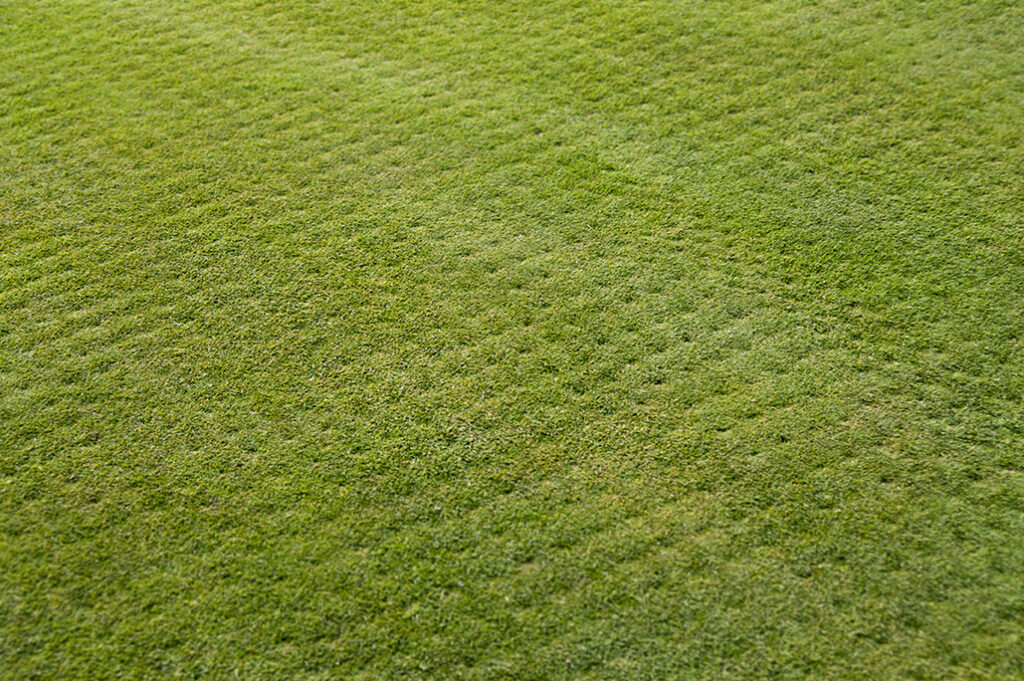By, the Old Guy with the Pony Tail
Soil Aeration:
Soil aeration equipment comes in many shapes and sizes. This equipment can range from very large units to smaller tow behind and walk behind units. Regardless of size, the primary objective of this equipment is to relieve compaction and open up the soil allowing detrimental gases to escape and allow air, water and nutrients to enter the soil and become available to the turf root system.
Core aeration is typically considered the most beneficial of the aeration techniques. Cigar size plugs are pulled from the soil and deposited on the surface. Adjacent soil migrates into the holes left by the aerator and relieves compaction. The plugs break down over time, filter into the holes and low areas of the lawn and help to smooth small undulations while providing soil cover for new seed. Other less effective methods may include slicing and solid tine aeration.
To be beneficial, aeration can be accomplished any time the grass is actively growing but is most beneficial in the early fall and should maintain a minimum depth of 1” to 2”.
Thatch removal:
Thatch is often times thought of as dead grass clippings left from mowing. In reality, only a small portion of thatch is grass clippings. Most thatch accumulation is the result of dead and decaying root system; a result of the turf’s never ending process of replacing old root system with new. This thatch can be a beneficial insulation at thicknesses of less than ½ inch. When thatch gets beyond this thickness, it minimizes the grass’s ability to absorb oxygen, water and nutrients. Thatch also harbors unwanted insects such as chinch bugs and sod webworms.
There are many small motorized units available that are very effective in thatch removal. Keep in mind this can be a very labor intensive procedure when done effectively. This is a very beneficial procedure when incorporated with aeration and over-seeding. Again, this is an invasive procedure best accomplished in the early fall when the turf is actively growing and better equipped to recover.
Mowing:
In general, mowing is not given enough consideration when evaluating the causes for a poor quality lawn. All the nutrients manufactured by the grass are manufactured in the green leaf. Those not utilized at the time are stored in the root system. This process also requires sunlight. The challenge is to maintain the grass at a height that allows sunlight into the turf canopy and provides enough surface area to produce the carbohydrates it needs to survive. In most cases this equates to a managed height between 2 ½ and 3 ½ inches. Additionally, you don’t want to cut more than 1/3 the green leaf at any one mowing. These requirements create the challenge when mowing once per week.


Leave a Reply